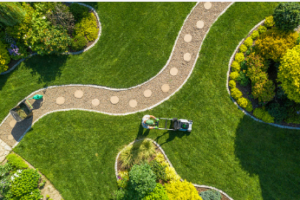Landscape Design is the art of arranging and modifying features in a garden, park or other outdoor space. It involves various skills, including planting and constructing fences, patios, walls and raised planters.
 Aesthetics
Aesthetics
The aesthetics of landscape design is an essential aspect of the discipline. It is not just about the appearance of a landscape but also about how it impacts a person’s mood and overall well-being. Check full designs here about the landscapes.
Humans are incredibly adept at gathering and processing information about their environment, which is why people tend to like and appreciate scenic views of nature. It is also a factor in the preference for ‘well-maintained pastures’ rather than ‘wild nature scenes’, although these landscapes are not ecologically sound.
Moreover, people enjoy landscapes with good environmental quality because these landscapes provide valued experiences. They are also beneficial for a person’s mental health and well-being because they are peaceful and relaxing.
Aesthetics can also be seen as an evolutionary adaptation; based on the habitat theory of evolutionary hypotheses, people have considered aesthetic preferences to find a suitable landscape for survival.
While biodiversity research is primarily oriented to ecosystem functioning, evidence is emerging that people are also influenced by ecological characteristics when making decisions about their landscapes. For example, in addition to species richness, many studies have found that people respond to combinations of functional traits, such as colour and shape. It directly impacts landscape aesthetics; for example, plants with various conditions are more attractive to users than those with only one colour.
Function
Landscape Design is the art of arranging land and its objects (buildings, roadways,
Proportion refers to the size and balance of plant and hardscape components in a landscape. It will help create an overall balance in the space, making it more pleasing to the eye and easier to navigate.
Aesthetic qualities are also part of landscape design, emphasising the visual quality of plants and hardscapes and aesthetically pleasing details like texture, shape, colour and form. The invention also incorporates senses such as scent, sound and touch to create a harmonious and soothing overall feel.
Creating a sense of unity in a space is important, as unified areas can help people feel connected to the outdoors. In addition, this will improve their overall mood and encourage them to spend more time outdoors!
Screening undesirable views is an architectural function that landscape architects use to define space and gradually reveal desirable ideas. It can be achieved by planting trees, shrubs or other plants to block unwanted views.
Providing proper organisation for the space is another crucial aspect of landscape design, which includes the appropriate plant selection, a plan for paths and shortcuts, and implementing all necessary program elements such as seating, parking, or bike racks. It also ensures that the space is easy to navigate and enjoy so that a wide variety of people can use it.
Maintenance
Keeping a landscape clean, safe and attractive requires skills, knowledge, physical exertion and tools. Depending on the site’s location, the maintenance activities may include planting, fertilisation, watering, weeding, pruning, trimming, lighting, fencing, pool care and running drainage.
Developing a maintenance plan is an essential first step for any organisation. It should be a formal document that is easy to access by all team members and updated annually.
It is also essential to have a system to ensure that all work is done to the specified quality standards. It means proper instructions should be included in the maintenance plan so that workers can do their job well and meet specific expectations.
Once a maintenance plan is completed, it should be reviewed regularly by all team members and the maintenance manager. It helps the team keep their knowledge up-to-date and ensure they are performing the right tasks at the right time.
It is crucial to ensure all the work is completed promptly and within budget. It should also be used to help manage spare parts inventory so that they are not overextended or need to be ordered when they are not required.
The maintenance team should be able to identify any significant failures and take action to prevent them from occurring in the future. It might be through training, a change to the preventive maintenance programme or equipment redesign.
Maintenance aims to keep a facility in good working order and avoid breakdowns, which could result in damage or loss of revenue. Maintenance methods, such as preventive and predictive maintenance, can reduce downtime and increase the longevity of assets and facilities. Check full designs here about the landscapes.
Value
Landscaping is more than just adding a few potted plants to your yard; it is about creating an attractive, sustainable environment. A Journal of Environmental Horticulture study found that poor landscaping can decrease home values by 10%.
Investing in professional landscape design services is essential to maximise your home’s value. According to a 2005 survey of real estate professionals, relatively large landscape expenditures increase perceived home value and can command higher selling prices than homes with minimal landscaping.
The survey results also showed that the quality of the landscape increased perceived home value, with design sophistication being the highest factor. In addition, the growth and maturity of landscape trees and shrubs enhance aesthetics.
Aside from aesthetics, landscape design can also create a sense of unity in your space. It is achieved when a plan’s elements come together and fit into a cohesive theme.
Another way to enhance the aesthetic value of your space is by creating a natural ecosystem that will attract birds and other wildlife. It can help control pests, clean the air and reduce toxins in your surroundings.
Landscape architecture can also help protect the environment from climate change by planting suitable plants in areas where deforestation is prevalent. Combining plantings and other methods, such as mulching, can achieve this.
